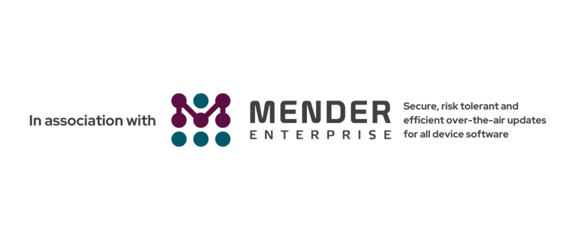The Device Chronicle speaks to Quentin Cabrol, Lead Product Engineer and Head of IOT, Technology Management at Aeler Technologies about shipping containers that are smart with IoT and OTA software updates.
Based out of Lausanne, Switzerland, Aeler Technologies manufactures shipping containers offering full in-transit visibility. These leading edge and digitally-empowered shipping containers are lighter to transport, are stronger to protect goods against temperature changes, enable a 10 to 20% CO2 emissions saving from transit, and provide real-time monitoring of goods in transit. Quentin is involved at the centre of this IoT-enhanced product environment. He offers guidance on how these IoT projects are typically approached.
Business motivations for adding IoT to shipping containers
Quentin begins by outlining the main business motivation requiring an investment in a fleet of connected devices? It concerns leveraging a potential source of data to create new automation and application opportunities for the business. Companies want to harness the power of IoT gateway devices to reduce the cost to update and service devices that are supposed to be “almost autonomous” out in the field in that it will not be easy or cost-effective to have a service technician maintain them. These devices also need software security updates delivered remotely to protect against new attack vectors as quickly they emerge.

Quentin continues to explain that prudent cost management of an IoT devices project is top of mind the Head of IoT and that these project leaders will look for technology partners that can help reduce operational expenditure on the field IoT devices.
Best-of-breed partners
Furthermore, these projects will look for partners who will work with them to develop the IoT enhanced product from the ground up. For Quentin, this means building a technology stack by working with partners that will be experts in the domains that the in-house technology team are not. In a trusted partner, speed and ease of deployment is also a requirement so to limit the internal team’s technical debt by relying on a proven and maintained solution, They do not want to reinvent the wheel and get distracted from their core product development activities. Quentin notes that “with an industrial-grade IoT product, complexity comes into play when one thinks about security, updating, and maintenance. This is a huge jump in complexity from what is required when running a prototype to what is required when you are running a full industrial product.”
Looking for external expertise
Furthermore, a common strategy is for companies with these IoT products to maintain the homogeneity of the technology stack by selecting software and hardware partners who can be trusted for their deep domain expertise. Quentin says “this external knowledge and commitment from the partner can become a key part of the IoT product. Critically, to be considered best-of-breed, these partners should also share their customer’s vision on how technology should be developed and maintained over the longer term. A good example of this is outsourcing of critical OTA infrastructure to specialists. It makes a project easier to maintain by relying on a team of OTA software updating experts that can take care of that layer the best.
Security is essential with shipping containers
A strong and safe platform is needed. Quentin notes that secure updates for embedded devices in IoT projects are essential. This has been re-emphasised from watching the recent effects of Solarwinds hack attack. IoT projects are becoming increasingly vigilant to malicious threats and vulnerabilities. The SolarWind hack which affected some 250 federal agencies and many commercial companies. The hackers compromised SolarWinds’ Orion monitoring and management software, allowing them to “impersonate any of the organisation’s existing users and accounts, including highly privileged accounts.
Product extensibility
Furthermore, Quentin notes that as applications can be deployed remotely in an IoT project, new value can be created by leveraging an existing system. “Your mission must be to make the Edge gateway smarter.” OTA software updates help deliver key value such as product extensibility but as outlined above, Quentin does not believe that it needs to be an “in house specialty”. At Aeler, he says the technology team would prefer to focus on their product development and added value application logic rather than OTA software updates. This also has the desired effect of helping them to do a better job of re-allocating internal development resources and also lowering the total cost of ownership. Quentin rather smartly observes that “specialists maintain their solution for many clients and as such the relative OTA costs per client drops compared to an in house only development.”
Measuring project success
And how is the success of an IoT project with a partner typically measured? Quentin begins by saying that metrics are developed to assess the speed of development and deployment of the IoT connected devices and the infrastructure that will support them. “Projects that drag on increase the cost to the business.” Furthermore, capital expenditure (CAPEX) for the project including development costs are assessed. The operational expenditure (OPEX) over the lifetime of the device is also important: “How many updates will be delivered over time? What is the expected cost of data and updates? And the ongoing engineering support maintenance costs and on the field maintenance costs? All these questions are addressed and answered. The robustness of the solution is also assessed and this is a measure of trust in the infrastructure that is used. What is also important for Quentin is the expected reactivity to client complaints and/or functional issues . time to solve issues in the production environment – from the partner. This marks out Best-of-Breed partner from a standard one.
For another interview with a Head of IoT, read an interview with Dehan Kuran from Philips Healthcare on innovation and IoT.

